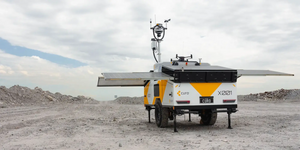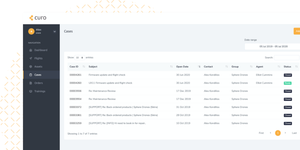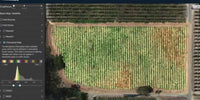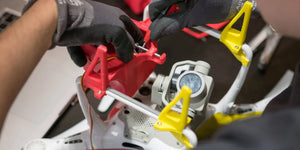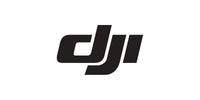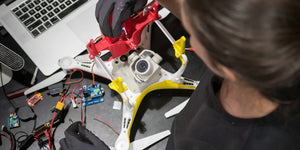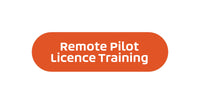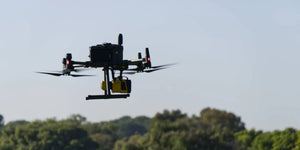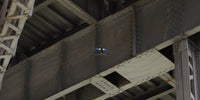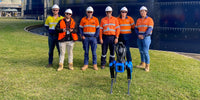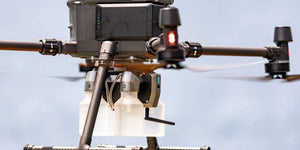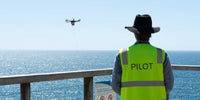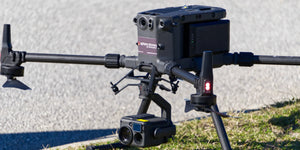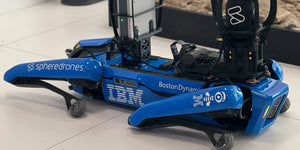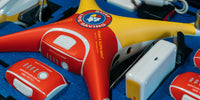Remote inspections are carving a path through the next phase of marine digitalisation, providing owners and operators with new ways to survey both newbuilds and in-service vessels. Still, remote inspection techniques (RIT) are subject to certain limitations: they are only applicable to certain regulatory backgrounds and must be managed by qualified operators. Nonetheless, they have enormous potential. With a clear understanding of how RIT can be used – and by dispelling common misconceptions about RIT – ship managers can reap both the benefits available today, and those coming down the line.
What are RIT?
RIT encompass a range of technologies. These include aerial and underwater drones, remotely operated vehicles, crawlers, and poles. RIT are currently used for the following applications:
- Unmanned Aerial Vehicles (UAV) conduct global visual inspections (GVI), take Ultrasonic Thickness Measurements (UTM), and perform close-up surveys for ships undergoing intermediate and renewal surveys.
- Remotely Operated Vehicles and underwater drones perform underwater surveys without the need for divers.
- Poles and crawlers take UTM when UAVs cannot, and scan plates when they are not accessible from a vessel’s interior.
Common RIT misconceptions
While RIT can be used for a range of survey tasks, certain misconceptions remain surrounding their scope, utility, and potential.
Myth 1: RIT can replace scaffolding
It is common for industry players to compare the costs of using drone technology to those of using scaffolding. However, this comparison is overly simplistic, overlooking the prevalence and importance of rope access in modern scaffolding management.
For decades, rope access has successfully been used to reduce the need for scaffolding and help surveyors reach otherwise inaccessible areas. Drones represent an upgrade to rope access, making setting up scaffolding and performing visual inspection even safer and more efficient. Drones can be used alongside or instead of rope access, performing the same tasks, but neither technology can replace scaffolding completely. For the near future, scaffolding will remain necessary for conducting repairs.
Myth 2: RIT cannot take ultrasonic thickness measurements
Taking UTM is a critical aspect of ship surveys, and as of today, there are some technical considerations when using RIT for UTM. For example, older ships with severe plate corrosion can be challenging for UTM tools attached to aerial drones to assess, due to the additional size and weight. Drone operators require small, light drones to access all parts of the ship and pass-through openings as small as 400 mm wide.
While not all the aerial drones can support UTM technology, several temporary RIT solutions can work with aerial drones. Poles fitted with UTM tools or cameras can be combined with the drone to expand the inspection range for UTM and assessments of suspected areas. Operators can also deploy crawlers independently to conduct close-up visual inspections.
So, while drone technology does require further development to create a single drone-based solution, RIT do include reliable options for taking UTM.
Myth 3: Drones are autonomous
Many industry players imagine drones as autonomous robots: a self-operated, self-propelled technology that performs tasks automatically, like a machine on an assembly line.
While autonomous drones are an exciting area of research and development, and may become the norm in the long-term, today’s drones cannot operate on their own. Aerial and underwater drones must be built and piloted by qualified suppliers and operators with a deep understanding of their technology.
Additionally, there are several roadblocks to overcome before fully autonomous drones can be developed. Ships undergoing survey would need to have highly accurate and regularly updated 3D models for drones to work from, which is not the case for the existing fleet. Onboard connectivity would require significant improvement, including inside cargo holds and other confined spaces inside the hull. Stakeholders across the supply chain would also have to define a business model to ensure that each ship could access a drone as needed.
For the moment, the marine industry should maintain its focus on already available drone technologies and the added value and benefits they offer. In the meantime, stakeholders can work on improving existing RIT, which will be used onsite in the short- to mid-term.
Understanding the benefits of RIT
For ship operators and managers, RIT offer several advantages. These include the ability to carry out surveys while at sea, a more efficient ship inspection process, and lower overhead costs. RIT also offer high-quality data and images that can improve the repair process, making it easier for superintendents to follow up on hull maintenance.
For inspectors, the key advantage of RIT is their ability to minimise and even eliminate dangerous tasks onboard, such entering confined spaces and working at height. Surveyors can boost the value of their reports to clients by accessing consolidated data for survey preparation and reporting and working with other remote experts to assess ship condition. As a result, clients can access clear data that backs up and clarifies survey findings and increase survey efficiency by up to 30%.
RIT also enhance the quality of surveys by recording inspection data. This information can be included directly in survey reports and added to the vessel’s inspection history, guiding future surveyors. Looking even further ahead, the increased availability of digital data (e.g., photos, videos) will contribute to the development of other applications for improving survey time and quality. These include in-depth Artificial Intelligence (AI) models, automatic pattern detection solutions and tools for accurately assessing structure condition.
Source: Bureau Veritas
